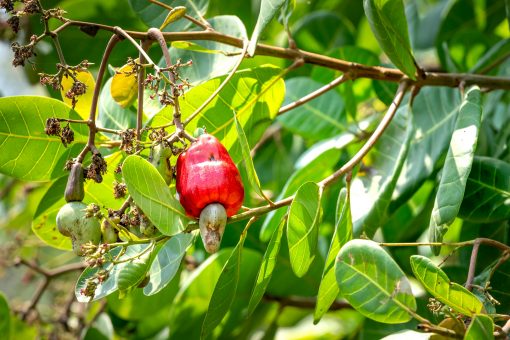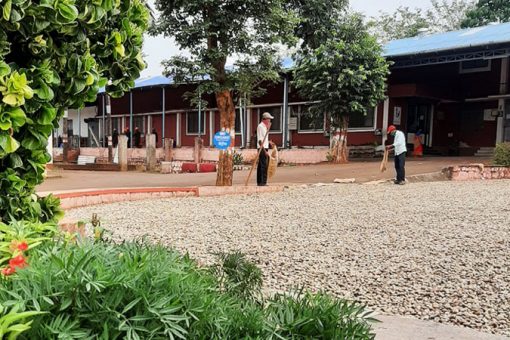GURPUR SADANANDA PRABHU
Clad in a spotless white Dhoti-Kurta, this septuagenarian can be easily mistaken for an old man next door, who however surprises you with his amiable, friendly attitude, cheerfulness and great sense of humour. Gurpur Sadananda Prabhu has always been a man with simple tastes but great ideas and vision. But what sets him apart from the rest is that he relentlessly worked in implementing those ideas with determination matched with hard work and succeeded against all odds. His story of success is the stuff, which the legends are made of and would be an inspiration for generations to come.
Even at 77, when most others seem resigned to the idea of retiring to take rest, G. Sadananda Prabhu is an exception. Age has not diminished his flavor for hard work, which has been a part of his life ever since he stepped into adolescence. Even today he carries on his daily chores as usual with the euphoria and enthusiasm that a 30-year-old entrepreneur might evince in his first venture. What strikes you the most in the man is his humility and calmness. The satisfaction of being contented, is writ large on the face. And certainly, for the youth who came from Gurpur, a village 15 kms. away from Mangalore, with nothing but star in his eyes and bagful of dreams, building Achal Industries from scratch is like a dream come true.
Achal Industries is engaged in the manufacture and export of Cashew Kernels and Cashew Nut Shell Liquid. Today, with a total annual turnover of Rs. 9 crores, it stands as a symbol of Sadananda Prabhu’s grit and single-mindedness of purpose. But he candidly says, “I am a satisfied man, not for the material gains I acquired through my business dealings, but for having led a simple life and for giving a livelihood to nearly 500 families in Dakshina Kannada”. His son, G. Giridhar Prabhu who has been a witness to his days of struggle succinctly puts it as “the most important quality of my father is the honesty and probity in both his public and private life. He made it possible that one can be honest and still achieve success in business”.
Sitting in the fourth floor of his spacious office “Suprabhath”, Bejai – Kapikad, Mangalore, is sure to make one feel different. It is a big hall without any compartments like today’s high-tech offices. But the ample natural light with plenty of air is enough to rejuvenate both the body and mind and the very atmosphere is soothing and inspiring. This four storeyed building is well maintained with enough space for free movement. For, behind the tall building located in Bejai – Kapikad, which may not be very impressive to look at, lays the meticulous planning and supervision of G Sadananda Prabhu, who, during the construction paid attention even to the minutest details in the form of personal supervision at every stage. All the occupants of this building echo the same feeling and are very happy with the maintenance, cleanliness and the overall comforts made available.
No doubt, the building symbolizes what the man stands for – discipline, devotion and the “living in comfort” logic.
His life and achievements read like a typical short story but this one is real. Born in 1925, Sadananda Prabhu lost his father when he was 12 years old. However, his two elder brothers who were 28 and 20 years older than him respectively, never let him feel the absence of his father. His brothers were doing grocery business in Gurpur and under their guidance and support he had his elementary education in Hindu Higher Elementary School, Gurpur, an aided school.
Higher education in those days was very expensive because the school fees were very high compared to the value of rupee. Naturally only a privileged few could afford High School education where the monthly fee was Rs. 5/- (1939), equivalent to today’s rupee value at about Rs. 500/-. For G Sadananda Prabhu, opportunity came in the form of scholarship from Sri Venkataramana Temple, Mulky, where there was a scheme to provide school fees for deserving students and he was fortunate to be one of the beneficiaries.
However, his educational progress came to a standstill on completion of SSLC in Board High School, Mulki and he had to help his brothers in the business. Opportunity beckoned also in the form of an employment as a teacher in the same school where he had his elementary education. As an untrained teacher he joined the School on a monthly salary of Rs.12/-. Though his colleagues persuaded him to undergo teachers training, he did not succumb because he wanted to take a risky and challenging career and stood firm on what he thought was right. Needless to say, though he liked teaching, he was not happy with his career and luck was certainly on his side. An order of the Education Department that only trained teachers should be appointed in schools came as a blessing in disguise. He was thus forced to bid adieu to his teaching career. It was back to the pavilion, situation to assist his brothers in their retailing trade. Since the Second World War was going on, food rationing was in force and his assistance proved beneficial.
Nevertheless, the experience he gained in the retailing business proved to be a stepping stone towards the higher goal he had set for himself. He came in contact with traders and dealers in Mangalore, which broadened his outlook and provided him ample scope to tread carefully in the dream of web he had built for himself. He gained valuable insight and experience in trade and commerce during this period of what he calls as “apprenticeship”. He learnt the trade and not the tricks of the Trade. “I wanted a career that would provide me independence to put my thoughts into action”. Once he had set his eyes firmly on the goal, he took a bold decision to tell his brothers that he wanted to put his thoughts into concrete action and all that he wanted was their blessings and support in the endeavor.
With their blessings, co-operation and financial loan, a 23-year-old young energetic Sadananda Prabhu, with his high ambitions, hopes and innumerable ideas came to Mangalore and entered into partnership with a reputed concern in the wholesale trade in Bunder area. This was in 1948 (Sept.). In the meantime, he also took another major decision of life in 1949 – that is of entering into marital bliss. Wittingly he says “my wife is serial number 9”. That is, she is the 9th among the 10 girls and one brother belonging to a single family. Marriage provided him stability and his wife proved to be perfect mate who provided him emotional stability and support. Her education was VIII Std. The family has three children. Two daughters married and a son married too.
The Partnership Company dealt with all essential commodities and the business thrived for 30 long years. During this period, the Partnership Company had set up an industrial unit in Bajpe to manufacture Groundnut Oil. It was a gamble to go for the unconventional type of business. “Mangalore was very orthodox and nobody actually used groundnut oil for cooking purposes, he recalls”. But Sadananda Prabhu and his partners had firmly believed that they could succeed if they gave the best commodity to the people at a reasonable rate. True to their belief and determination, the firm came out unscathed, which truly exhibits the adventurous spirit of Sadananda Prabhu. In 1971, the Partnership Company took over a sick cashew manufacturing unit on lease and managed it successfully. However, when the unit owner wanted this factory back after 10 years, it was returned without any hassles in 1980.
Just like every good thing in life has to come to an end, the partnership was terminated on completion of 30 years in business together. During the 30-year tenure Sadananda Prabhu was active member of the Kanara Chamber of Commerce and Industry and occupied the highest post as President in 1979-80 after serving as Hon. Secretary for three years in succession. Armed with the experience and insight he acquired in the course of business, he graduated from business to industry, a great leap forward to be independent and be his own master.
At 56, Sadananda Prabhu ripe with the experience he acquired in running a cashew industry, in association with his son, co-partner, a First-Class Commerce Graduate G. Giridhar Prabhu, set up a cashew manufacturing unit in the Baikampady Industrial Area as an H.U.F. unit viz Achal Industries. Starting with 60 workers in 1981, the Unit has grown leaps and bounds and employs about 500 people, out of which 450 are women. The group also has a unit in Kolhapur District of Maharashtra, which employs about 200 people in a very backward area. The choice of participation by co-partner, son Giridhar was his own, which was taken in his college days. Fondly, recalling his initiation into business, son Giridhar says, “even before I learnt the ropes of business, he showed full confidence in me and gave full freedom. His integrity and reputation has made my path easy”.
But success has not come on a platter to him. He slogged through initially and his experience came in handy to propel him to the pinnacle of success. By strict monitoring of quality control, the company earned name and fame and carved an unique niche in the field. “He had great ability to grasp and assimilate everything. He stressed good accounting practice and complied with all legal formalities. Having come up in a hard way, he had great concern for the welfare of the employees and their goodwill and support has been instrumental in our success”, opines son, Giridhar Prabhu. On achieving success, Sadananda Prabhu has been magnanimous to share a part of the profits with his employees by providing all the legal benefits due to them. Today, Achal Industries has the distinction of being one of the top 10 units, which compiles with law strictly.
G. Sadananda Prabhu had unique knack for tapping potential markets and he went by his instincts. He, therefore concentrated in improving the quality of the product to compete in the overseas market. Today, Achal Industries has emerged as number one exporter of cashew products in South India in providing quality material abroad.
But the story of success is not as rosy as it appears to be. For the last 12 years, they fought numerous battles with the Government and have succeeded in getting justice not for themselves but for the beleaguered cashew industry in general. The cashew industry was at loggerheads with Agricultural Produce Market Committee (APMC), which due to its irrational behaviour and unnecessary interference brought the whole cashew industry on the brink of disaster. While the cashew industry considered themselves as “Producers” and “Manufacturers”, APMC contended that they were Traders. It made a lot of difference because as traders they had to pay; one percent of their total turnover as market fee, which was substantial. Even the Supreme Court unfortunately could not come to their rescue because of interpretation of the law, which did not favour the cashew industry.
The Industry never gave up its fight on which it felt it was an unjust entry by the APMC in the territory not meant for it. Finally, the present Hon. Chief Minister of Karnataka, Sri. S. M Krishna, who was convinced of the rationality behind the arguments of the cashew industry, provided the much-needed relief to them. G. Sadananda Prabhu was in the forefront in this fight against the Government and no doubt, today he is hailed as the “person who was largely responsible to bring justice to the cashew industry”. He made innumerable trips to Bangalore to follow up the legal battle and age did not hinder his determination.
At 77, Sadananda Prabhu believes in the psychology of “living for others”. His approach to life has emerged from a liberal school of thought. “This has given me rich dividends in life not in the material sense but in terms of respect and reverence which money cannot buy”, he contends.
No, he is never tired of working. “I like to keep myself busy and earn my livelihood as long as I can” says the man who does not want to bask in the past glory. Though the industry (Achal Industries) is presently owned by his son Giridhar Prabhu, who happens to be the President of Kanara Chamber of Commerce and Industry this year, Sadananda Prabhu is actively involved in the day-to-day functioning of the group of the Industries. In fact, he along with his wife spends 2-3 months in Kolhapur for business purpose.
“Life is too short to sit back and ponder over past events”, he asserts. Though he is not into any form of fitness regime, he keeps himself hale and hearty by properly having his meals and spending considerable time for his daily ablutions. “Throwing the wastes out of the body is best way of keeping oneself healthy”, he reasons out.
But it is wrong to believe that it is all work and no leisure or entertainment. He likes to spend his time with his family. His grandson (10 years) provides him the best company. “We get along very well”, he says with a mischievous grin. He also loves to read the literature of –
a) R K Narayan
b) Bhavan’s Books
c) the Texts of Chinmaya Mission etc.
And watches Kannada soaps with his wife, who is fond of them. He is a great lover of Hindustani Classical Music, Jesudas and Pandit Jasraj being his favourites.
He however, has one wish and he is not sure whether it will be fulfilled or not. “I am yet to be convinced that there is another birth for me. If at all I get an opportunity to have a rebirth, I want to be born in India”, he convinces. What enamours him most about the country is its ethnicity, diversity and its spirit of resilience. In the same breath, he adds that as long as I cannot relate my past life to present life in the event of a rebirth, there is nothing to rejoice about the concept of rebirth. And the man is so convinced on all that he believes; it is almost infectious.
And what gives the man the utmost satisfaction is the familiar smile, recognition and respect he gets from his workforce, majority of whom are females. He is also happy to involve himself in any work that may benefit others. He firmly believes in the dictum that one has to give back to the society more than what he takes from it. He has therefore donated substantially to Ammembala Subraya Pai Memorial Fund, to assist the students to secure loans for further studies. For, he certainly remembers the scholarship he availed which helped him to build up his career in a way he had dreamt of. This speaks volumes about the man whose life reads like a story only to be true.
He says:
“Arrogance Leads to Self-Destruction –
Ignorance is not a Virtue –
Life is joy – Enjoy every bit of it –
Of course, follow rules of the game.”






